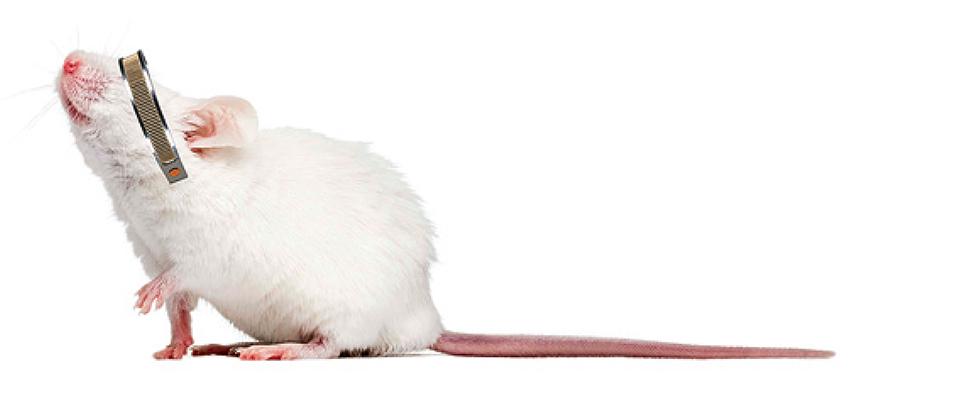A new drug could shed light on blindness.
If the three blind mice that all ran after the farmer’s wife had consulted with Berkeley neurobiology professor Richard H. Kramer, they might have stood a chance of saving their tails. Kramer and his team of researchers at Berkeley, together with scientists from the University of Washington, Seattle and the University of Munich, have synthesized a molecule that temporarily restores some vision to mice. They are already developing an improved compound that could someday help people with degenerative blindness.
The chemical, called AAQ for short, plays a kind of “trick” on the nervous system, says study lead Kramer. By injecting the compound into the retinas of mice with retinitis pigmentosa, he found that AAQ temporarily restored UV light sensitivity to normally “blind” neurons. The chemical acts like a photoswitch that binds to the surface of the damaged retinal cells and activates them in the presence of UV light.
AAQ is just a forerunner of a new line of drug therapy for treating retinitis pigmentosa and age-related macular degeneration in humans, according to Kramer. Unlike surgical sight-restoring methods, AAQ is completely reversible and non-invasive. Furthermore, it doesn’t present the same challenges to development as surgical approaches, nor is it as controversial as stem cell–derived therapies.
“Some folks have already called my office asking if they could bring a family member in for an injection,” he said, “but there’s still a lot of research to be done.” He and his colleagues are now investigating the next generation of compounds. For instance, AAQ responds to UV light only and lasts less than 24 hours. The new chemicals are more receptive to the visible spectrum, last longer, are more sensitive to bright light, and are more stable.
At this time Kramer says it’s hard to predict when these or more advanced compounds will reach human trials, but in any case he hopes to be in the same room when the first human subject confirms: I can see.




















